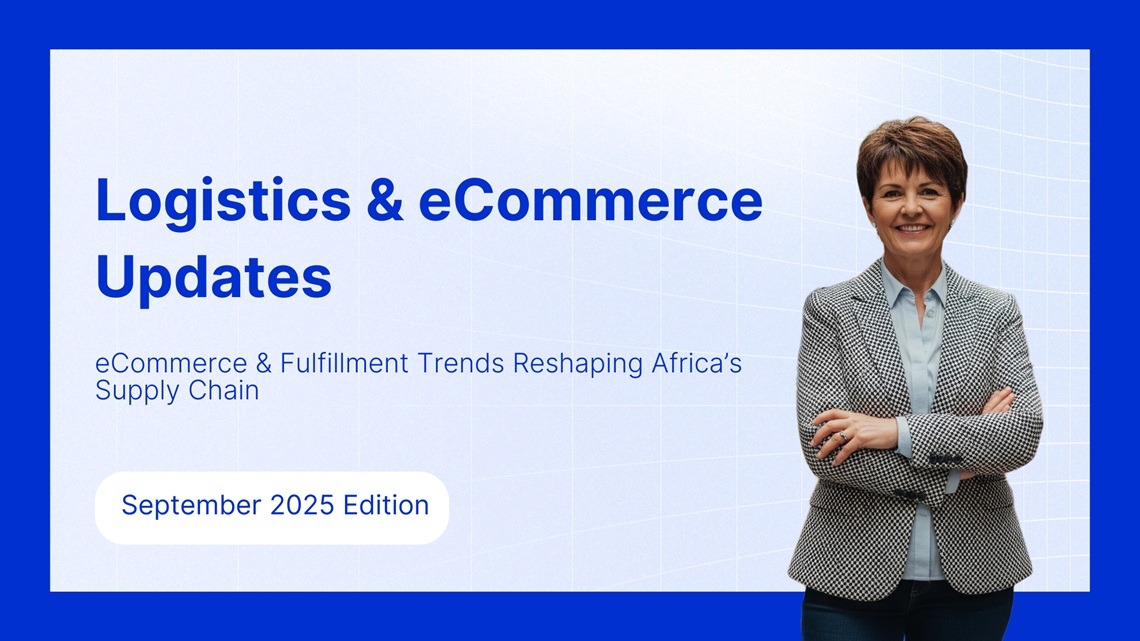Your mid-month roundup for fulfillment, eCommerce, and logistics in South Africa. Staying ahead means tracking what’s changing, from ports to payments to warehousing.
1. Transnet and Liebherr Forge Long-Term Port Equipment Deal
To tackle long-standing issues of backlog, equipment shortage, and operational inefficiencies at ports, state-owned Transnet entered a 10-year partnership with German manufacturer Liebherr. The deal includes procurement of new cranes, ship-to-shore (STS) cranes slated for Durban and multiple rubber-tyred gantry (RTG) cranes for both Durban and Cape Town. Alongside is a 20-year asset management program to cover maintenance, spare parts, and repairs.
2. Online Retail Expected to Surpass R130 Billion Revenue in 2025
Online retail in South Africa is projected to exceed R130 billion by end-2025, reaching nearly 10% of total retail sales. Growth in the first half of the year continues to outpace physical retail significantly. Categories like groceries, fashion, health & beauty, and value-segment retail are all contributing. Strong digital payments infrastructure and consumer trust are cited as key enablers.
3. Warehouse Occupancy Rate Climbs as eCommerce Pressure Grows
Modern warehouse occupancy across Africa, including South Africa, reached about 83% in H1 2025, up from ~75% a year earlier. Demand is especially acute for high-quality (“Grade A”) warehouse space, particularly in urban hubs and along trade corridors. E-commerce growth, agro-industry, and the push for more resilient supply chains are key drivers.
4. Private Freight Rail Access Expanded
In efforts to alleviate pressure on the state-run freight rail operator, the government approved licences for 11 private operators to run freight trains on Transnet’s network. These new operators will service 41 routes, targeting high-volume bulk commodity corridors (minerals, fuel, etc.). The move is intended to increase capacity, reduce delays, and improve reliability on rail freight flows.
5. Port and Service Levels Showing Progressive Stabilization
There’s evidence that port operations are recovering: ship wait times at Durban’s Piers 1 & 2, and Cape Town Container Terminal (CTCT), have been reducing. However, wind-related delays at Cape Town still occur, and some terminals continue to face variability. Meanwhile, international freight rate indices show easing costs, though logistics players caution that early arrivals, unannounced changes, and unpredictable stack windows still pose risk.
Shiprazor Insight of the Month
- Infrastructure investment is catching up with demand but not fully yet. With the Liebherr deal and private rail operators coming online, some of the long-standing friction points are being addressed.
- Retailers should plan for continued demand pressure on last-mile logistics & warehousing, especially as online retail scales. Having flexible fulfillment and reliable delivery windows will be key.
- Port stability improvements are helping, but variability remains. Early planning, better visibility and buffer strategy are no longer optional, they’re essential.
- The cost of logistics (shipping, warehousing, customs handling) will increasingly be a lever differentiating winners and laggards in e-commerce, not just marketing, pricing or product margin

